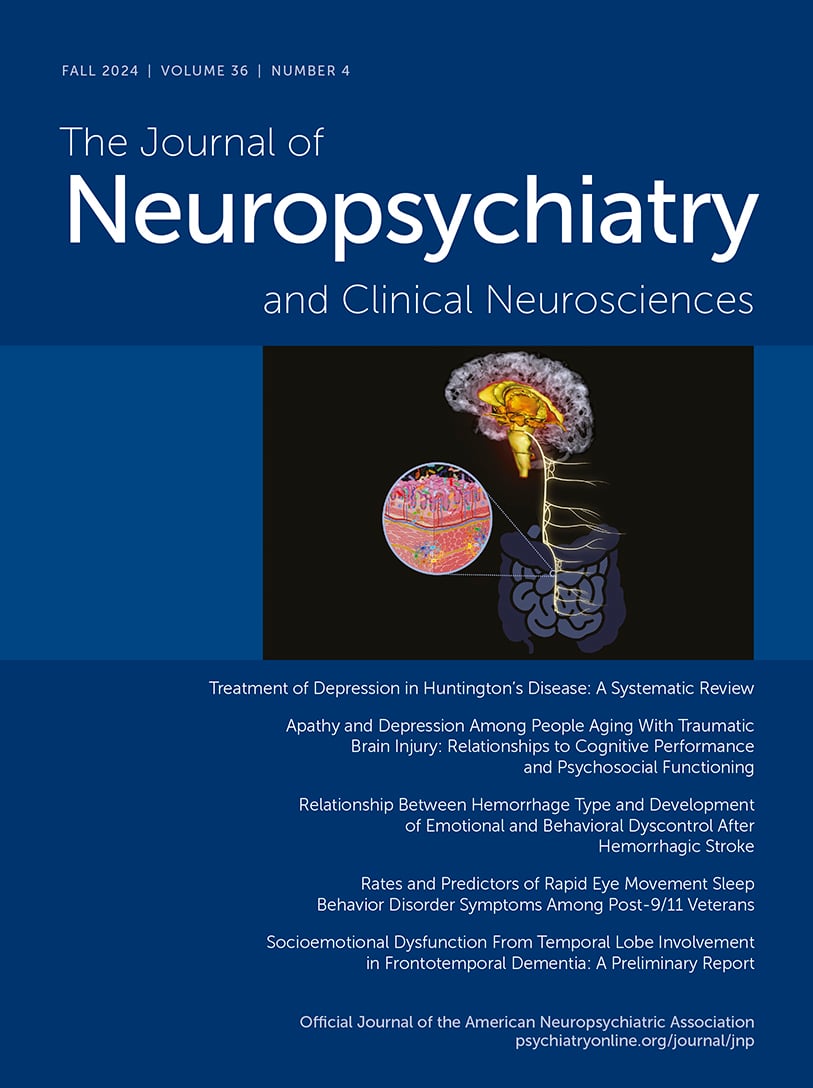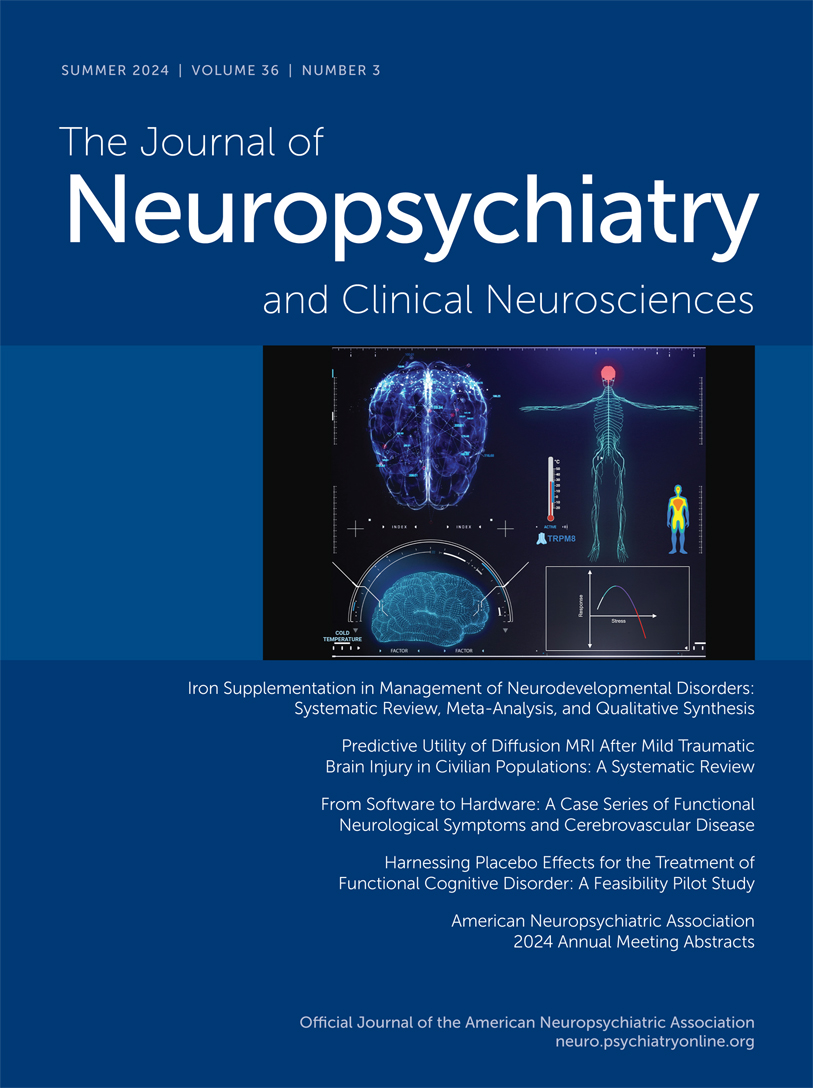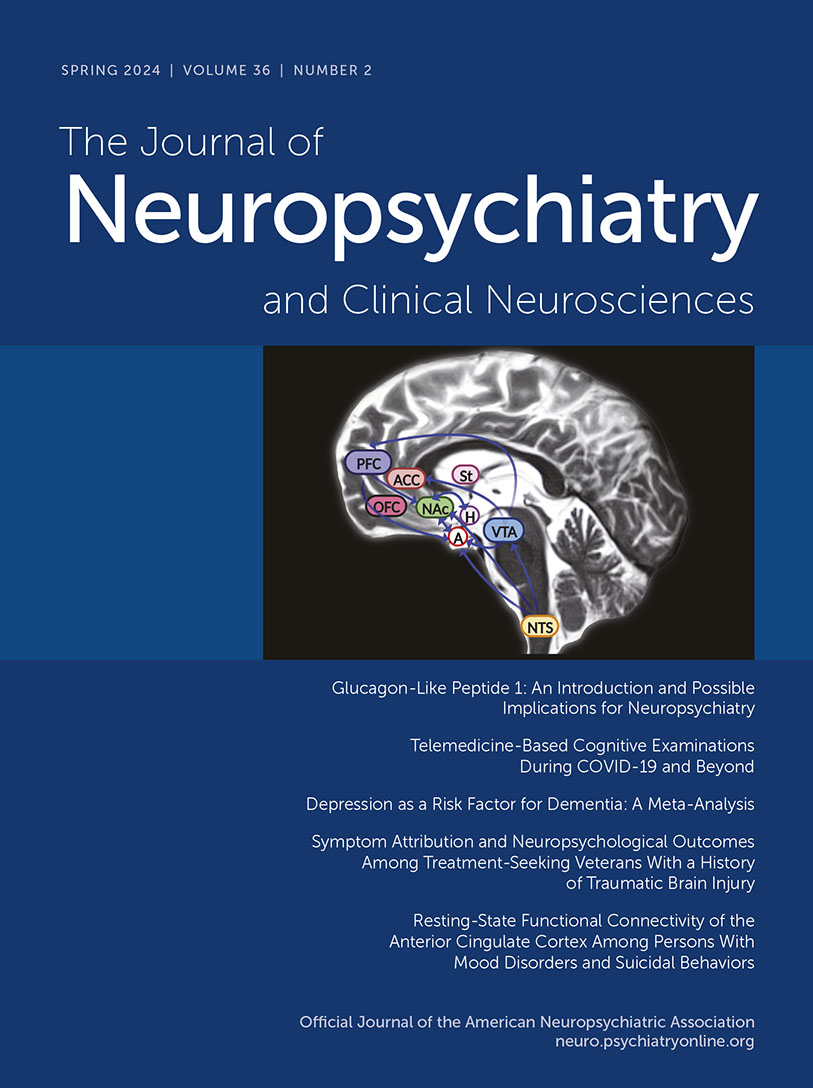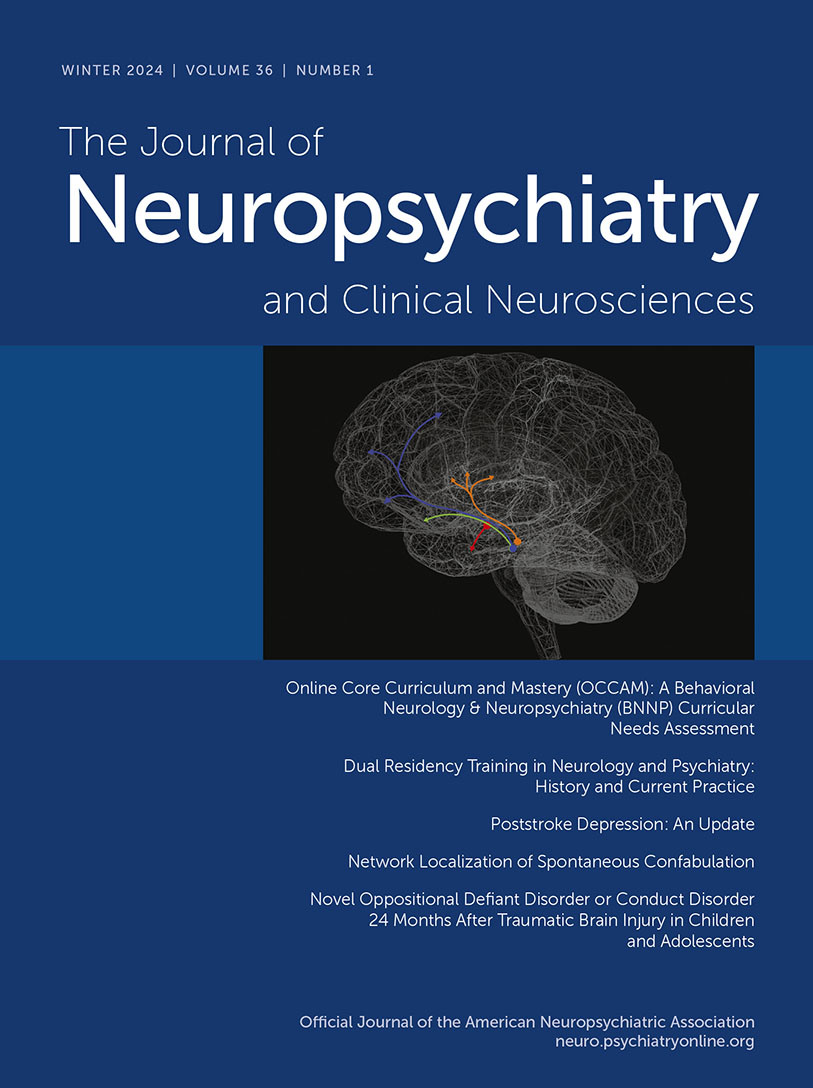The Journal of Neuropsychiatry and Clinical Neurosciences
- Volume 14
- Number 2
- May 2002
Windows to the Brain
Special Article
Publication date: 01 May 2002
Pages130–140The authors analyzed data from 69 published case studies of Psychotic Disorder Due to Traumatic Brain Injury (PDTBI) in order to describe its common characteristics and assist in its diagnosis and differentiation from schizophrenia. The majority of these ...
https://doi.org/10.1176/jnp.14.2.130Publication date: 01 May 2002
Pages141–154Depersonalization and derealization are commonly reported in the general population as a response to stress. The symptoms have also been described in patients with a primary psychiatric or organic diagnosis, where their secondary status precludes a DSM-IV ...
https://doi.org/10.1176/jnp.14.2.141Publication date: 01 May 2002
Pages155–160Because no one has ever composed a glossary of psychiatry's numerous eponyms, the author collected eponymous signs and syndromes for a behavioral lexicon. Eponyms are included if they recall a real person, if they have special relevance to psychiatry, and ...
https://doi.org/10.1176/jnp.14.2.155Regular Article
Publication date: 01 May 2002
Pages161–166The aim of this study was to determine if testosterone and estrogen levels correlate with aggression in older men with dementia. Plasma total and free testosterone and estrogen levels and scores for behavioral disturbances, in particular aggression, were ...
https://doi.org/10.1176/jnp.14.2.161Publication date: 01 May 2002
Pages167–175This study examined the frequencies of the 10 symptoms of delirium identified in DSM-III-R among patients with delirium (DSM-III-R criteria) who did or did not have dementia. The prevalence of each symptom, the numbers of symptoms, and the combinations of ...
https://doi.org/10.1176/jnp.14.2.167Publication date: 01 May 2002
Pages176–184Postconcussional disorder after a relatively mild head injury is common. Although a partial organic etiology is presumed, little imaging evidence exists for this assumption. In this study, patients with mild to moderate brain injury (median Glasgow Coma ...
https://doi.org/10.1176/jnp.14.2.176Publication date: 01 May 2002
Pages185–189Psychosensory symptoms have relevance to the study of chronic posttraumatic stress disorder (PTSD), given that their presence is associated with limbic system dysfunction and that several features of chronic PTSD suggest that it, too, may be associated ...
https://doi.org/10.1176/jnp.14.2.185Publication date: 01 May 2002
Pages190–196Studies examining visual processing in schizophrenia have provided inconsistent results. In this study, the authors measured static and dynamic visual contrast sensitivity (CS) in patients with schizophrenia (n=20) and control subjects (n=15). ...
https://doi.org/10.1176/jnp.14.2.190Publication date: 01 May 2002
Pages197–201The present study extended previous work on olfactory dysfunction (odor identification deficits) by using the Pocket Smell Test (PST) to discriminate between groups of patients with Alzheimer's disease (AD), vascular dementia (VaD), and major depression (...
https://doi.org/10.1176/jnp.14.2.197Clinical and Research Reports
Publication date: 01 May 2002
Pages202–205A retrospective chart review was conducted on 11 patients with a remote history of acquired brain injury (ABI) referred for psychiatric treatment who were treated with divalproex sodium alone or in combination with other psychotropic medications. The ...
https://doi.org/10.1176/jnp.14.2.202Publication date: 01 May 2002
Pages206–209Thirteen patients with treatment-resistant major depression were given venlafaxine, at doses ranging from 150 mg to 375 mg, combined with ECT. Propofol was used as an anesthetic. Ten of 13 (76.9%) were considered responsive to combined ECT-venlafaxine ...
https://doi.org/10.1176/jnp.14.2.206Publication date: 01 May 2002
Pages210–213The authors report a female patient with sporadic double cortex syndrome who manifested recurrent interictal schizophrenia-like psychoses. She had no mutations in the doublecortin gene but a pericentric inversion of chromosome 9. Neurodevelopmental ...
https://doi.org/10.1176/jnp.14.2.210Neuropsychiatric Practice and Opinion
Classic Articles
Book Reviews
Letter
Correction
Calendar
Past Issues
View Issues Archive
Vol. 36 | No. 4

Vol. 36 | No. 3

Vol. 36 | No. 2
